In recognition of the annual Black Art Matters Festival, we asked four students to reflect on the history and future of Black art, as well as the significance of the festival at Amherst. The festival, which took place on Mar. 24, 2022, in the Powerhouse, is a student-led art celebration of Amherst’s Black students, hosted by the Mead Art Museum and the Multicultural Resource Center.
The Festival Producers
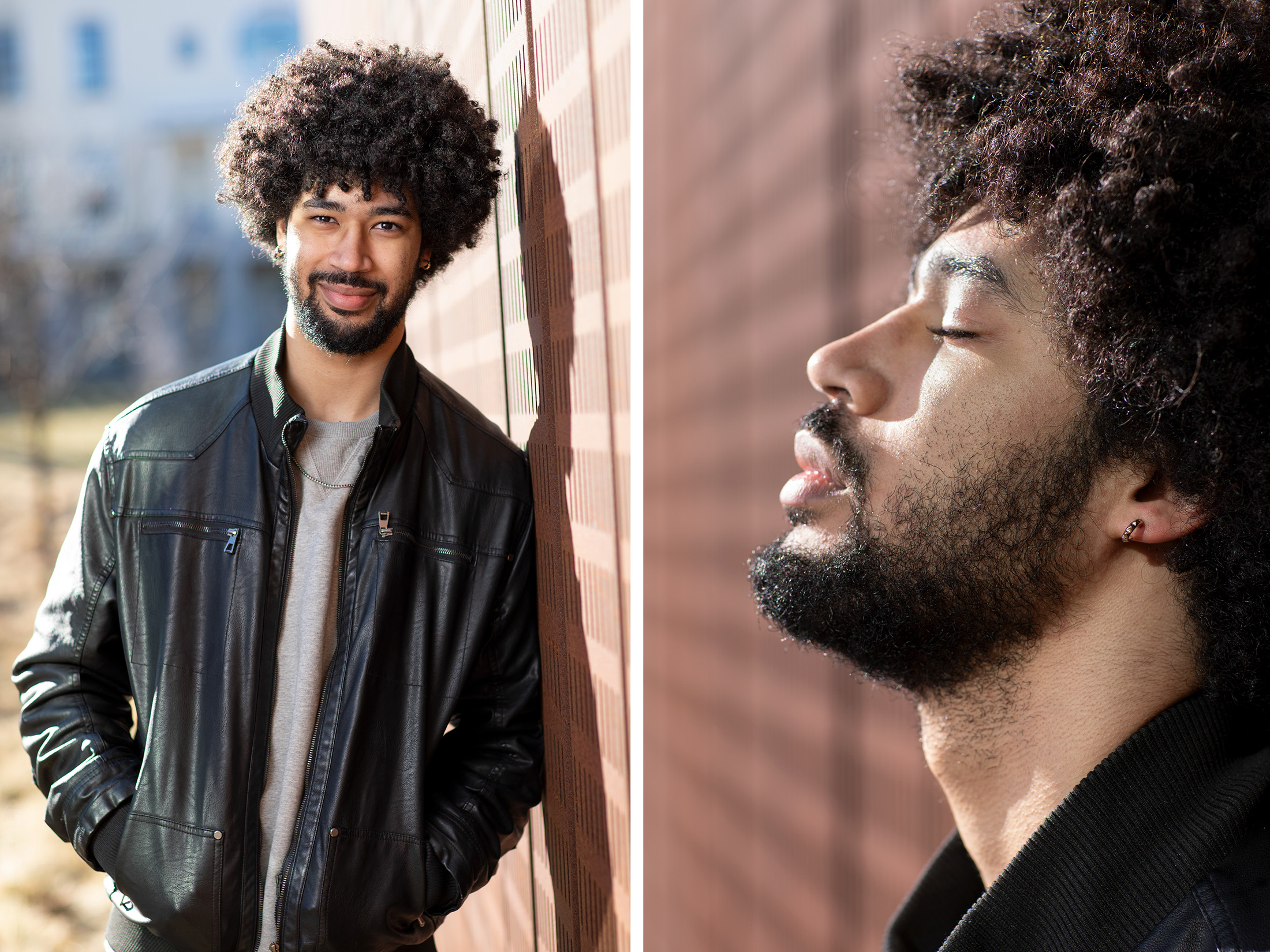
Kai Ahmadu ‘22
Majors: Black studies and psychology
Role in the festival: Student producer and artist
“I didn't always consider myself an artist, but I knew after taking art classes in middle school and then going into high school, I always found a certain peace in the space I was given to create. [When I entered the upper-level classes] in high school, I was figuring out what exactly I was interested in, so I took a printmaking class. In that class, I found that I really liked improvisational work, putting on some music, seeing where my energy is and just going from there.”
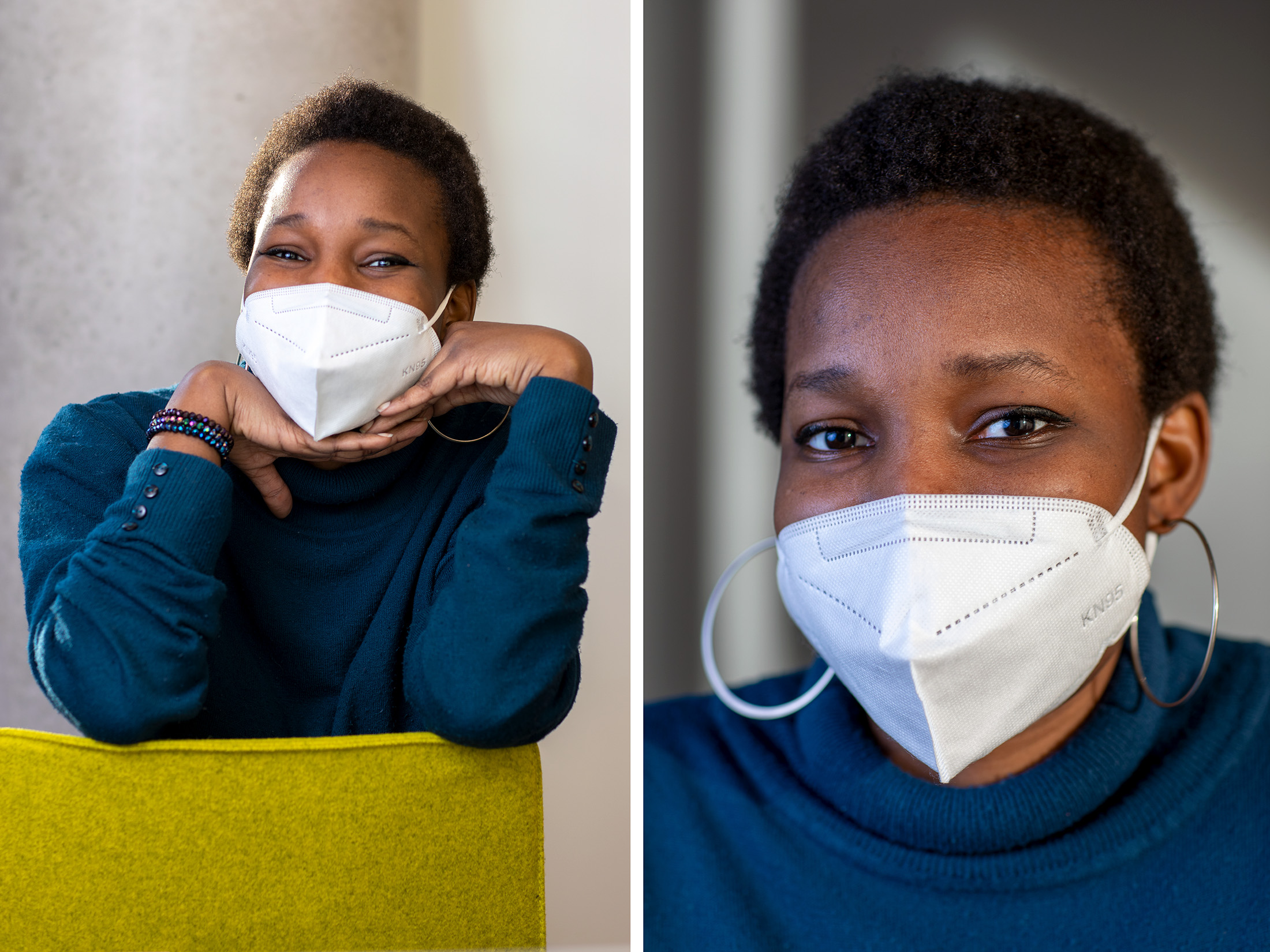
Osasikemwen “Sike” Ogieva ’25
Major: Biology
Role in the festival: Student producer
“As long as there are Black people, there is always going to be Black art. And, like all art, it's going to reflect the lived experiences of the people that create them. Black art is always going to be a reflection of Black people in society and how their lives are.
“I hope the message of Black art is able to change and give Black artists an opportunity to not just focus on oppression. It seems like when you are a Black artist, you are required to always talk about how difficult life is for Black people, because it's difficult to ignore something so important. I just hope that with time, in the future, we can see more freedom in Black art. It shouldn't be a matter of necessity to create art.”

Kiiren Jackson ’24
Major: Black studies (plus a pre-med concentration)
Role in the festival: Master of ceremonies and artist
“It's insane to think about this school, in this area [...] and students, whether they be FLI (first-generation, low-income) or not, whether they be African American or not, coming in and really displaying themselves in a way that isn't necessarily just, 'Look at the pain that I've experienced.' Even though that's a part of it too.
“I think it shows Black people's resilience. Just to think about how we even got here. I even think about—I'm about to go into this museum, and I'm about to rap. … I think it's beautiful that you can come into this place that was not made for you, that wasn't designed for you, and unapologetically be yourself.”
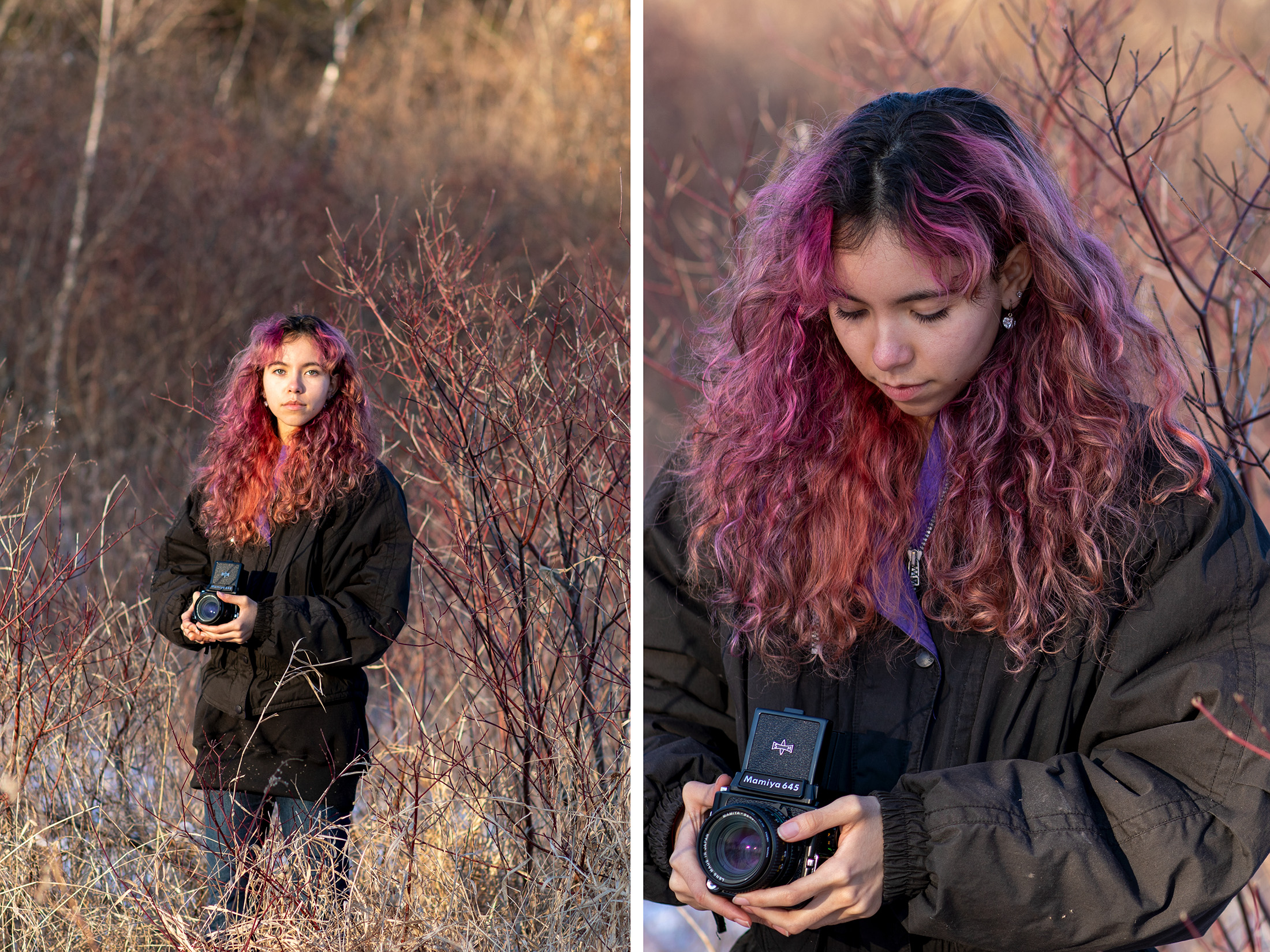
Kendall Greene ’24
Major: Art and the history of art
Role in the festival: Student producer and artist
“[The future of Black art], I think, [is] people just knowing they have the freedom to create, especially if they’ve been restricted in the past or told that that's not something they should pursue, or [told] they should focus on things that can create a more stable future, or if they've been discouraged and told that they're not talented enough or good enough. Just having a space for people to freely express themselves, really be themselves, and feel accepted, seen and appreciated. Especially among the Black students—not feeling like they have to narrow and focus on a specific avenue that will create a secure future that their parents want them to.
“Just knowing that this is a space where people can be themselves and be creative and share what’s in their hearts and their minds, through whatever medium.”
The Festival Artists & Their Artwork
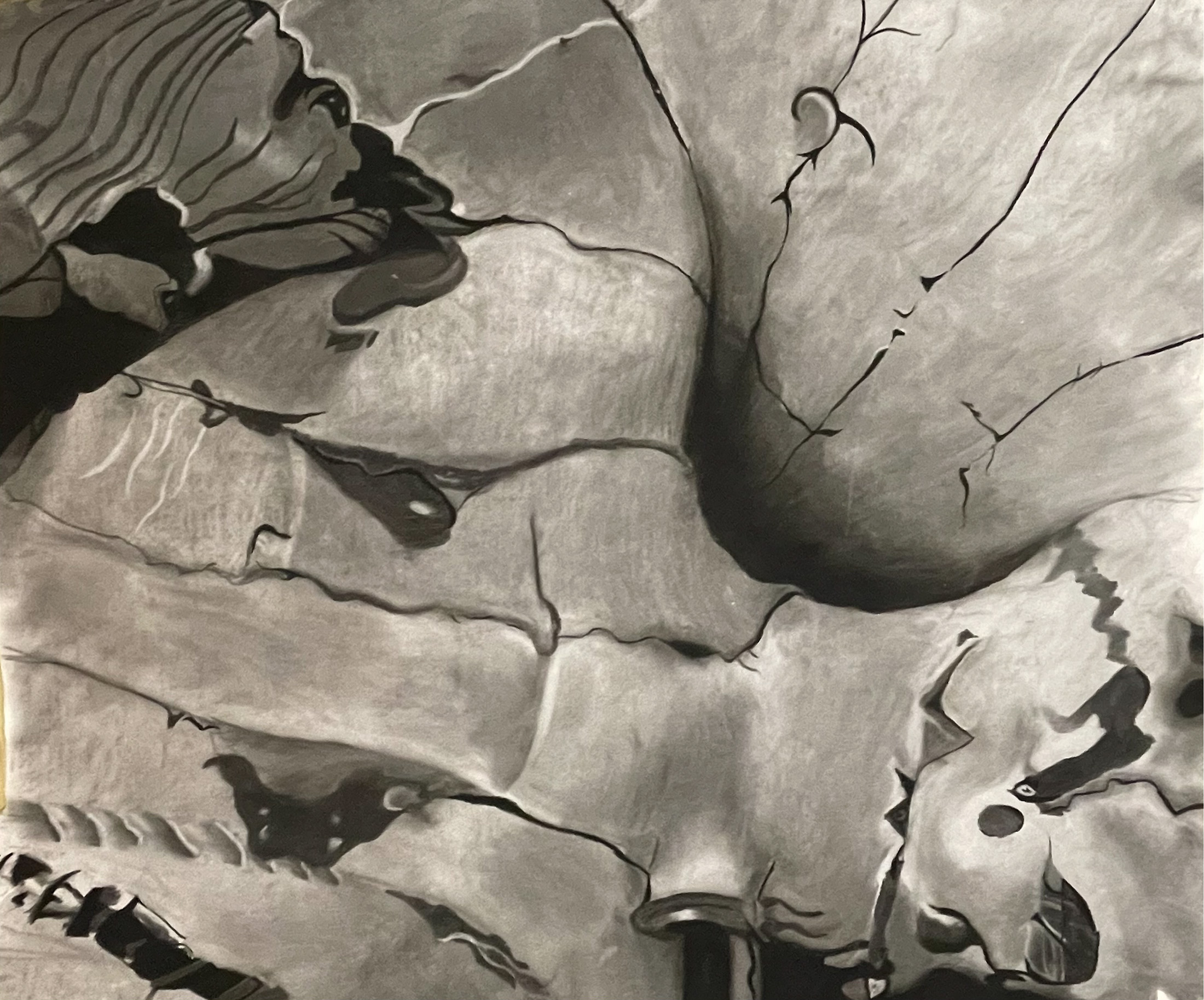
Kendall Greene ’24
Art: Charcoal drawing; detail of ginger root
Major: Art and the history of art

Alana Bailey ’23
Art: “Reflect”
Majors: Math and economics
“[The festival] is a space where Black art can be appreciated and understood through a shared connection.”

Zora Duncan ’23
Art: Untitled
Major: Anthropology
“This festival guarantees at least once a year that I can display myself and my work, one time that I will definitely be seen and heard. I think, having participated each year since I was a freshman, it is something I look forward to now.”

Ayo Eniola ’24
Art: “cellular awareness” and “that from which we all emerge”
Major: Interdisciplinary
“Being at Amherst has given me the courage to make art without apology. I am surrounded with beautiful colored friends that see and affirm my artistry and remind me that whatever I’m creating is perfect, just because I am creating it. Professors like Jude Sandy, visiting assistant professor of theater and dance, and Sonya Clark ’89, professor of art and the history of art, gave me the creative liberty to make whatever has meaning to me.”
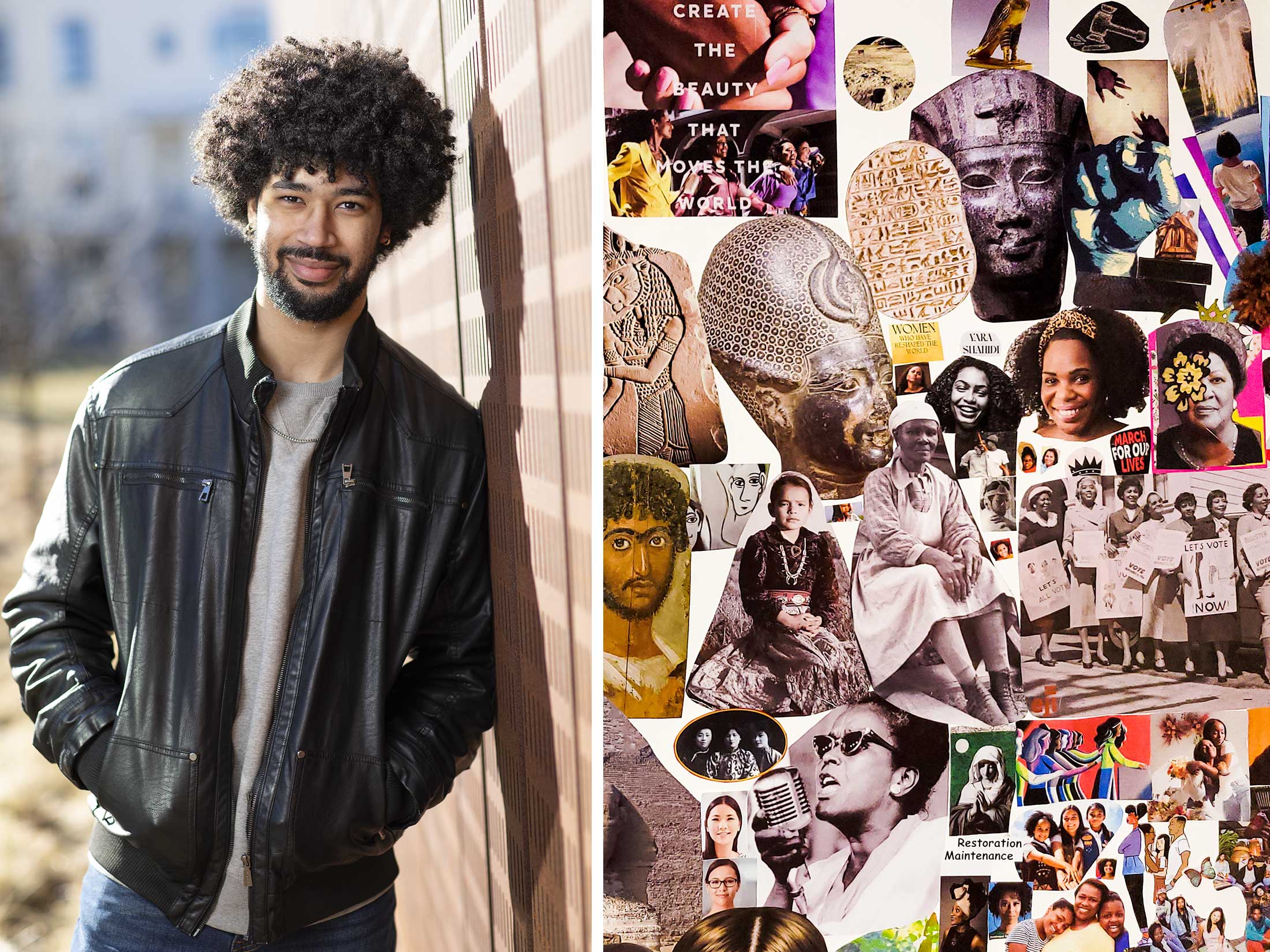
Kai Ahmadu ‘22
Art: “Diasporic Deference.” Multimedia composed of cut-outs from magazines, posters, and book jackets.
Majors: Black studies and psychology
Role in the festival: Student producer and artist
“[The Black Art Matters (BAM) Festival] raised the potential of connections I already had with other Black people on campus, and it’s a great application of the classes I've taken, combining other people’s perspectives, styles, overall creativity, and meshing it together. The closest experience I’ve had to that would be the Black Student Union's Harlem Renaissance and time in the Multicultural Resource Center space, where different people come into the room and share their stories. It’s definitely added to my experience at Amherst.”

Tiia McKinney ’25
Art: “Roots”
Major: English
“Celebrating Black artists means also celebrating our beauty and acknowledging our histories. This festival means centering the ‘Black experience’ while also giving students a place to just share where we otherwise might not be able to.
I hope that in the future, we can have more art classes that combine Black studies and center Black experiences for the whole diaspora.”
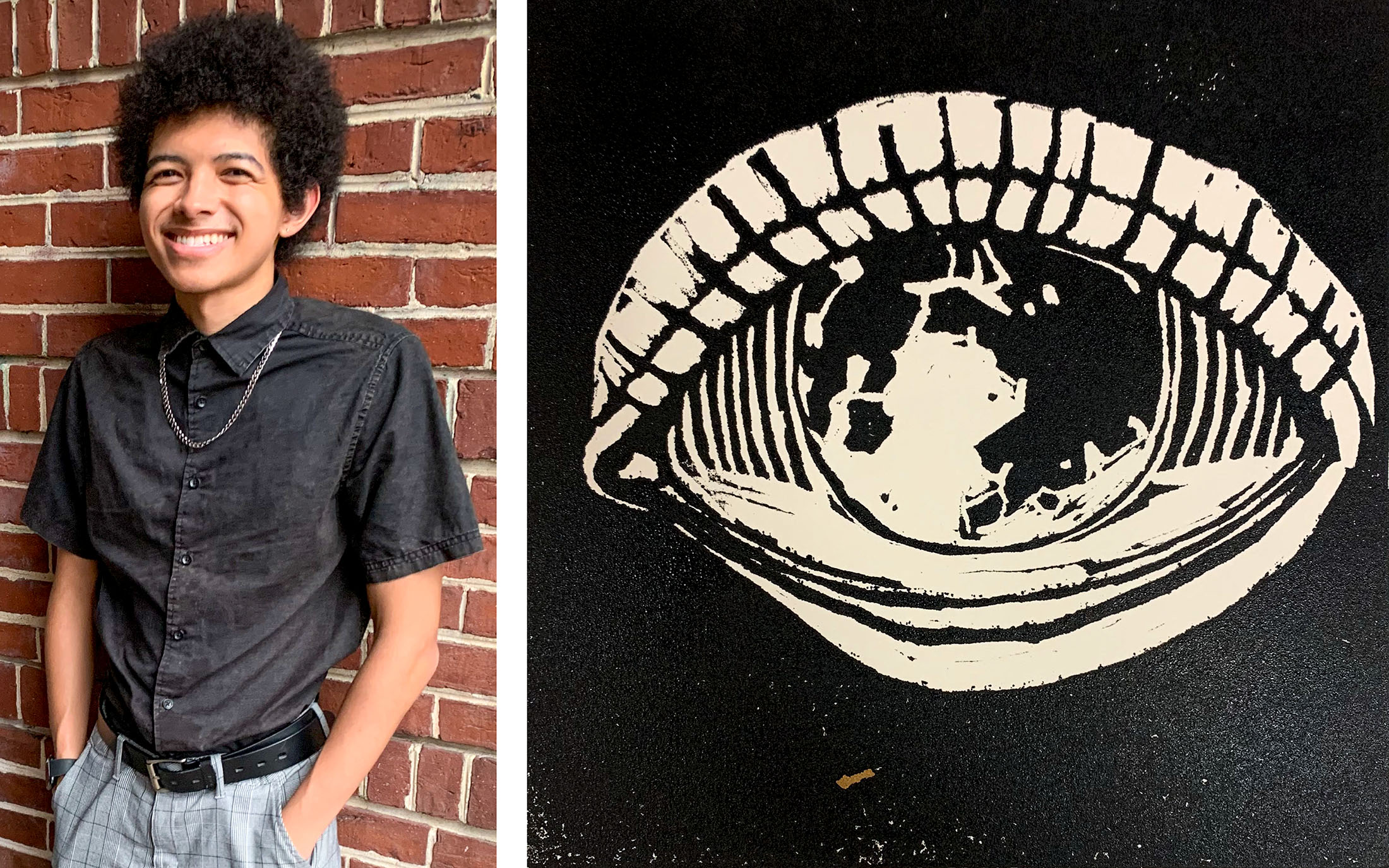
Zachary Rivers ’24E
Art: “Moonsight”
Major: Biology
“Visual arts and Orature in Africa with Rowland Abiodun, professor of the history of art and Black studies, was a very inspiring class, because it taught me that ‘art’ is not restricted to the categories that Western fine art places on it. It is not just something pretty to be hung in a museum, it’s a vital part of community and spiritual life. [The course] Hand-Drawn and Hand-Printed with Betsey Garand, senior resident artist in the department of art and the history of art, the class where my work was made, was also very inspiring. I pushed my own boundaries and grew as an artist by working with a medium I had little experience in, printmaking.”
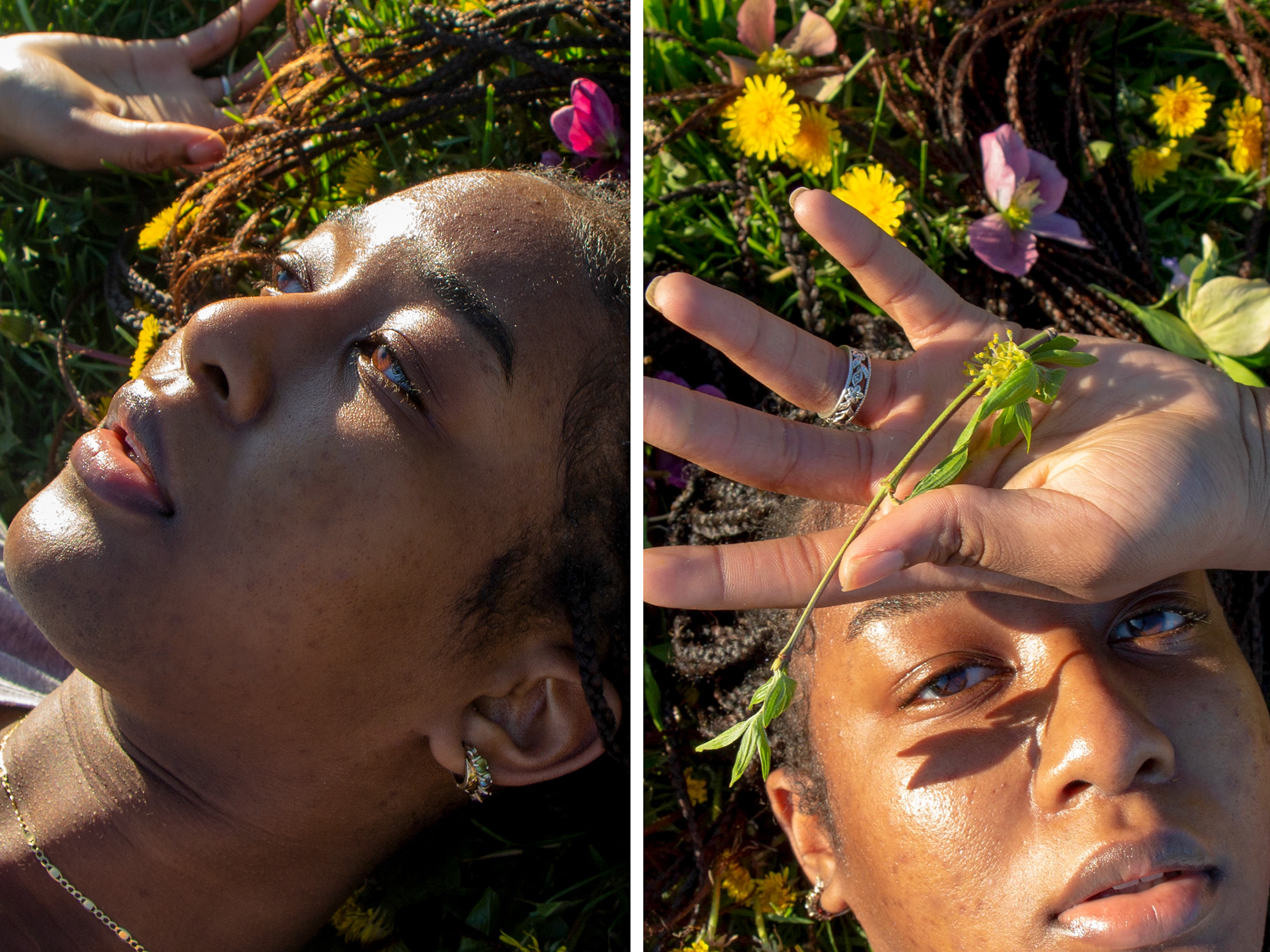
Maëlle Sannon ’24
Art: “Maëlle in Bloom”
Major: Economics and law, jurisprudence and social thought
“Amherst has given me the opportunity to venture into photography for the first time. I’ve gotten a lot of inspiration from the practice of Conway Professor in New Media Justin Kimball, the way our campus transforms during the spring and the very talented Kendall Greene ‘24 [a fellow student artist in the festival].”
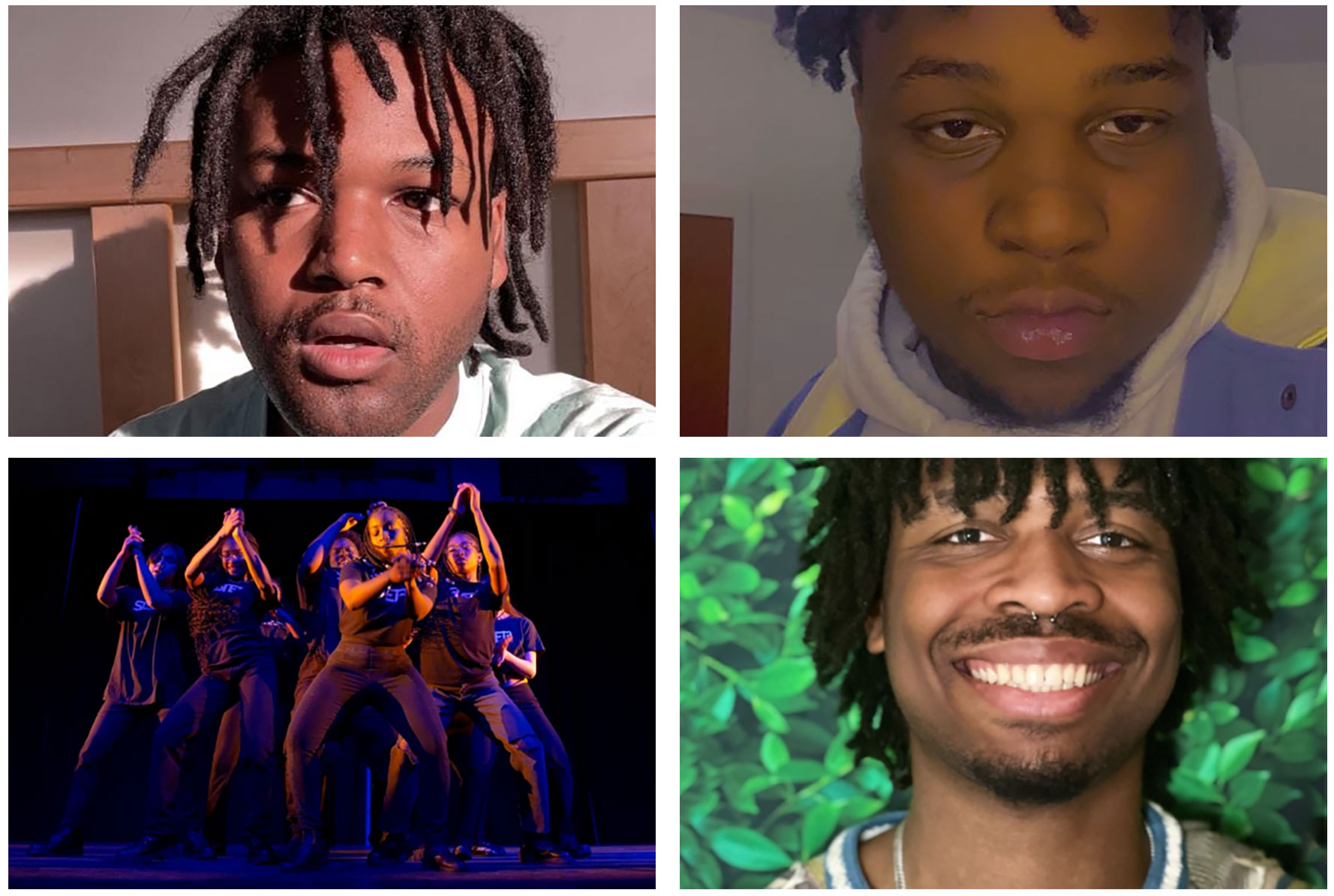
(top row, left): EJ Collins ’23
Art title: “What is Joy?” (Spoken word)
Major: Black studies
“I want the greater Amherst community to know about the light that Black art and artists carry but also how it ties into the experiences and communities that we come from.”
(top row, right): Quincy Smith ’25
Art title: “I Don't Believe In Anything but Cashmere Sweaters” (Spoken word coupled with photography)
Major: English and Black studies
“Black art is in its own league that deserves a physical place of celebration.”
(bottom row, left): Dance and Step at Amherst College (DASAC)
Art title: “Back Again: An Ode to the Past”
“[The festival] means representation.”
(bottom row, right): Joseph-Jerome Raymond ‘24
Art title: Untitled - (Vocal performance)
Major: Environmental studies
“Being at Amherst has allowed me to create spaces for myself in which I can create with people who share my vision and hold similar identities.”

Neviah Waldron ’24
Art: “Floating in a Gentle Abyss”
Major: anticipate Interdisicplinary
“My artistic practice when it comes to visual art grew from practically nonexistent to something that feels fun and liberating. My close friends and my partner are all beautifully creative people, and they constantly inspire and motivate me to create along with them. We all encourage each other to lean into ourselves and embrace our gifts with love. We always celebrate each other’s art.”
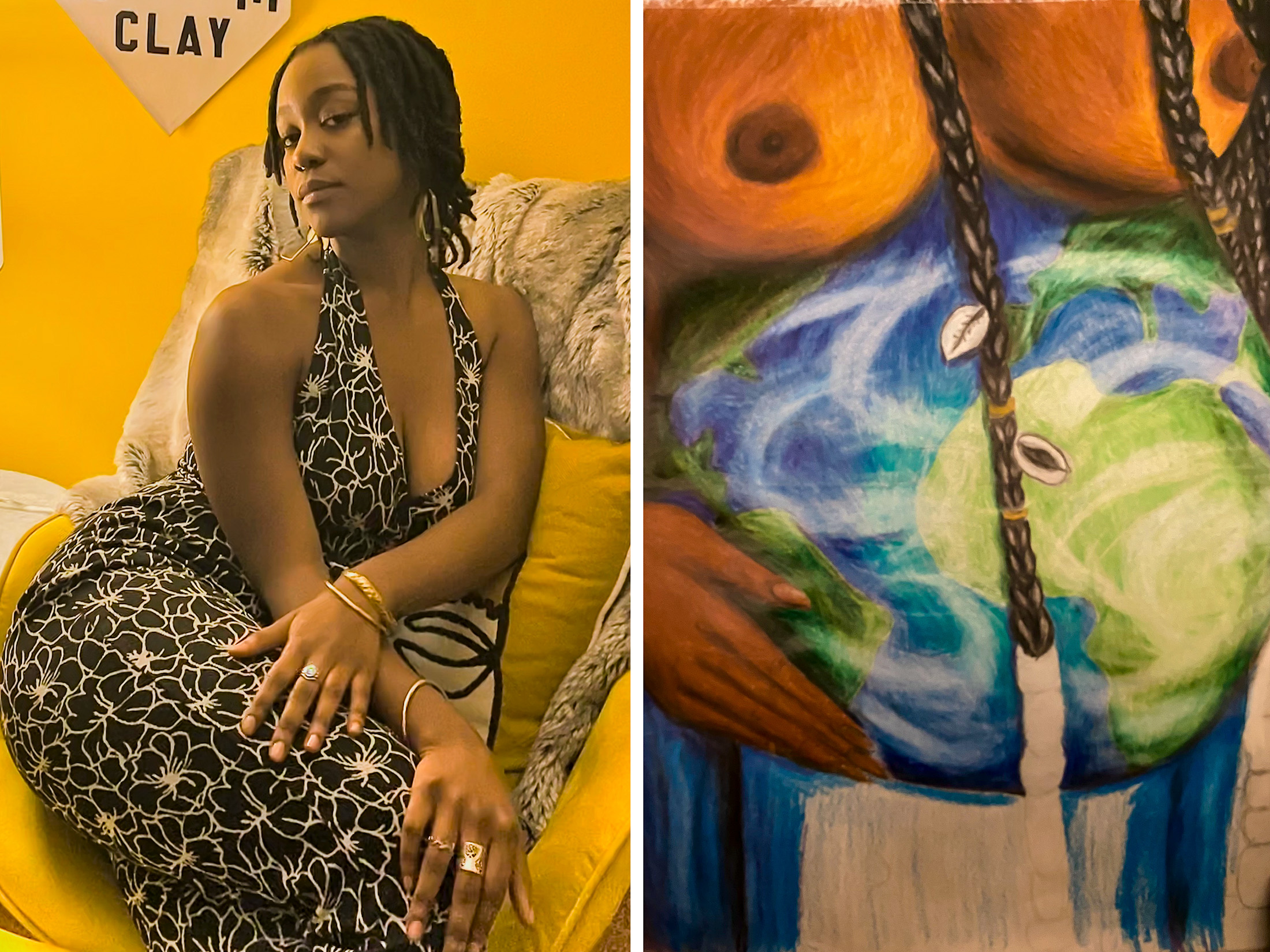
Abadai Zoboi ’24
Art: “Mother Nature”
Major: Black studies
“Being a Black studies major really comes through everything I do, especially artistically. Professors like Rhonda Cobham-Sander, professor of Black studies and English, really pushed me as a student, especially in [the course] Research in Black Studies where I sparked the beginning of a research project exploring the way Black women use dance as a tool of freedom at Amherst College. Jenna Riegel, assistant professor of theater and dance, and her partner, Sha, have helped me grow as a dancer. Performing a piece by Urban Bush Woman was evidence of how I’ve grown to understand my moving body. Clubs like Dance and Step at Amherst College (DASAC) also burst me out of the shell I caved into freshman year. Performing is magic for me. I’m known often as a dancer, but I haven’t shown many people my visual art skills as well. Nature is always a source of inspiration for me. Taking walks on the bike trail and looking out into the bird sanctuary always bring joy and peace to my mind and spirit.
The Black Art Matters Festival is a clear signal to me that Amherst can be a home to me. I grew up with artists all around me. My dad is an art teacher, my mom is a writer. I danced, acted, drew and sang. My sister sang, acted, drew and danced as well. Even my brother writes poems at times. I submitted last year and it was healing, even if it was online. Black art is my home. It is what I live and breathe. It is what I am.”
A Selection of 2021 Festival Participants

Abadai Zoboi ’24
My identity and my dance are inseparable. I move in a young Black woman’s body, and my existence alone is an act of defiance. Dance is the reclamation of my body’s autonomy, my body’s space and my body’s humanity. I come from a history of African women who found ways to live and breathe in their body. Utilizing my body to create art is paying homage to those women. I am because they were. Dance serves as a reminder of who I am. Dance is my therapy and my release. It conveys every emotion I hold in my body without me saying a word. In every way, my dance is Black, my dance is woman, my dance is me.

Paul Jackson ’22, artist (left)
“During the pandemic, I found that Amherst provided a full suite of Adobe tools. I requested an account and began to teach myself some of the tools. This art is an expression of my experience and identity of being Black in today’s America. It is a range of emotions, many good, many bad. But at the core of most of my work, I look to understand the connections between everything. Some of my favorite artists are Picasso, Yayoi Kusama, Van Gogh and Jean-Michel Basquiat.”
Ashanti Adams ’24, artist (right)
“My intersectionality as a Black woman adds the most to my life experiences and how I view the world today. Medusa is obviously based on the gorgon from Greek mythology. There are multiple versions of her story: one is that Medusa was raped by Poseidon and punished for that by Athena by having her hair turned to snakes. Another is that the sex was consensual and Medusa was cursed essentially for being sexually promiscuous. The final significant version says that she was raped and Athena gave her snake hair as protection from men. My piece was meant to be able to accompany any of those interpretations of Medusa’s story, but I made her Black to highlight the issues Black women face regarding sexuality and rape. I want my art to work as a voice for Black women as a glimpse into our lives, both the good and the bad. Since this is a predominantly white college, it’s important to me that the Black experience is represented and that it is being represented by the students themselves.”

Melody Dodoo ’21, emcee
Melody emceed the 2021 BAM festival live from the Mead's Rotherwas Room. Melody is a Law, Jurisprudence, & Social Thought (LJST) major with an International Relations Certificate from Accra, Ghana. She has been selected as a 2022 Schwarzman Scholar.
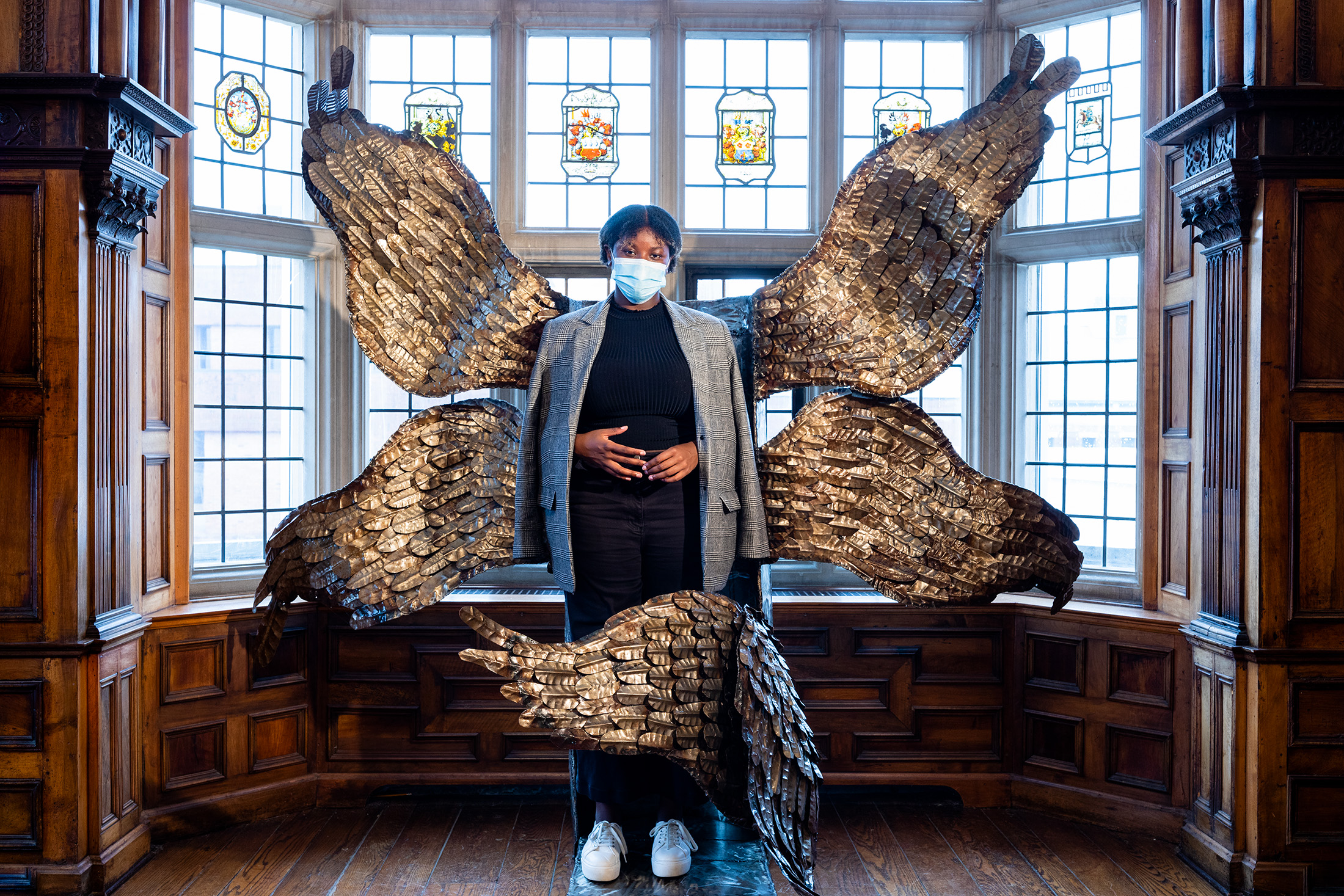
Zoe Akoto ’21, founder
The Black Art Matters Festival is an affirmation and celebration of Black student artists and creators. Zoe Akoto (Class of 2021) started the Black Art Matters Festival in 2018 when she noticed that the creative work of Black students was rarely seen on campus.
The first BAM Festival, in 2018, was a small art show that took place in one of the Amherst College residence halls. Akoto remembers walking to the event from her first-year dorm, “carrying an easel and three different students’ artworks and being so exceptionally nervous.”
“I think maybe thirty or so people came, pretty much just friends and friends-of-friends of mine and the artists in the show, but I was completely thrilled seeing everyone engaging with the artists and the performers” she says. The next year, Akoto teamed up with the Mead, which lent its venue, as well as outreach, marketing and production support. Since partnering with the museum, festival attendance has grown, and expanded to visual art, spoken word, dance, and musical performances by Black student artists from the Five Colleges. Today, the Black Art Matters Festival is a collaboration between the Mead Art Museum, the Multicultural Resource Center, the Black Student Union, and the Arts at Amherst Initiative.